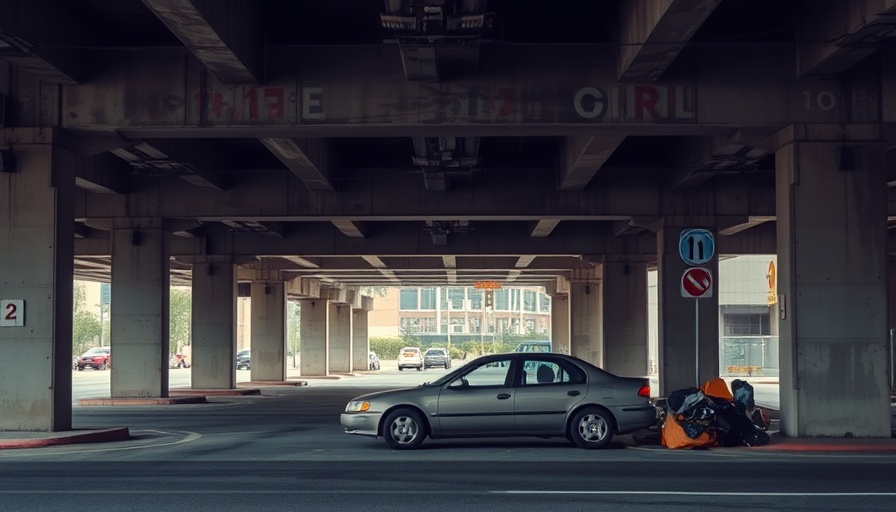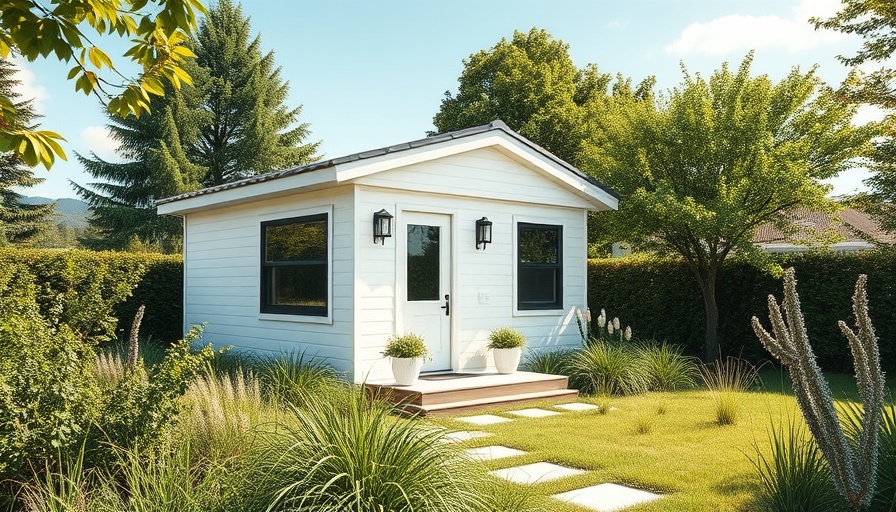
Omaha's New Ordinance: Aiming for Safety or Displacing Vulnerable Residents?
As Omaha prepares for a crucial city council vote on September 9, the focus on homelessness within the community intensifies. A proposed ordinance seeks to ban unauthorized encampments on public property, a reaction to rising visibility of homelessness beneath structures like the 13th Street bridge close to downtown.
The ordinance, championed by City Councilman Brinker Harding, aims to tackle what he describes as a "significant public health and safety issue." If approved, authorities such as police and first responders would first offer individuals living in encampments a chance to relocate to shelters before any citations or arrests are made. Violators may face fines of up to $300, jail time, or both.
Understanding the Growing Homelessness Crisis
Harding's concerns mirror a broader trend that has seen Omaha's homeless population rise alongside the city's growth in recent years. Yet, this year's data indicates a slight decline in visible encampments, suggesting a need for nuanced understanding rather than knee-jerk reactions. Jason Feldhaus, executive director of Threshold Continuum of Care, indicates positive signs, saying that for the first time in five years, the point-in-time count of homeless residents decreased in January.
As community members, especially homeowners and renters in Omaha, consider the implications of this legislation, it’s essential to weigh both public safety concerns and the inherent challenges faced by those without homes. The complexities of homelessness are rarely straightforward, as highlighted by Feldhaus's observations on why some individuals opt for outdoor living over shelters.
Why Some Choose Encampments Over Shelters
“It's about finding the right fit,” explained Feldhaus, suggesting that the circumstances prompting outdoor camping are varied. For many, shelters may offerconditions not conducive to a sense of security – from separation of family units to restrictions on pets and substance use. Isolation and the desire for a quiet space can drive individuals to prefer living outdoors.
Steven Doran, who currently resides under the 13th Street bridge, argued that the local shelter's environment can be overwhelming, stating, “People talk a lot at Siena Francis, and I don’t like that.” Such personal anecdotes underscore the necessity for tailored solutions addressing individual needs.
Omaha Community Perspectives: The Need for a Balanced Approach
While many homeowners and families seek cleaner public spaces devoid of encampments, community organization leaders like Feldhaus remind us that the issue at hand is deeply human and nuanced. The sentiment that “nobody wants this in their neighborhood” is understandable among homeowners and renters in Omaha; however, some advocates urge for a reevaluation of what homelessness solutions look like.
As the city grapples with growing social service demands, the question remains: Can Omaha strike a balance between public safety and the need for humane treatment of the homeless population? How can homeowners, renters, and other community voices turn advocacy into actionable change?
Future Insights: Charting a New Course for Solutions
The forthcoming city council meeting offers a critical moment for Omaha, where community members can voice their views on the ordinance—yet feedback goes deeper than personal housing concerns. Effective long-term strategies must engage individual stories and backgrounds while promoting systemic improvements in homeless services and shelters.
As local businesses, residents, and real estate developers wait in anticipation of the ordinance that may change the landscape of public spaces, it’s vital to open discussions that consider the voices of marginalized community members alongside those of homeowners and families.
Taking Action: Engaging the Omaha Community
Omaha's neighborhood residents stand at a pivotal moment, with the potential to influence the council’s approach to homelessness. Engaging with advocacy groups and attending city meetings can help mold community perspectives into practical solutions that blend compassion with safety. As our city evolves, we each have a role in shaping its future—whether investing in local outreach or simply lending an ear to those with stories to tell.
As Omaha embraces change, the message is clear: Together, we can work towards a solution that respects the dignity of all residents. Whether you’re a local entrepreneur or a homeowner tackling your own home improvement projects, joining the conversation about homelessness can lead us all toward a brighter future.
 Add Row
Add Row  Add
Add 




Write A Comment